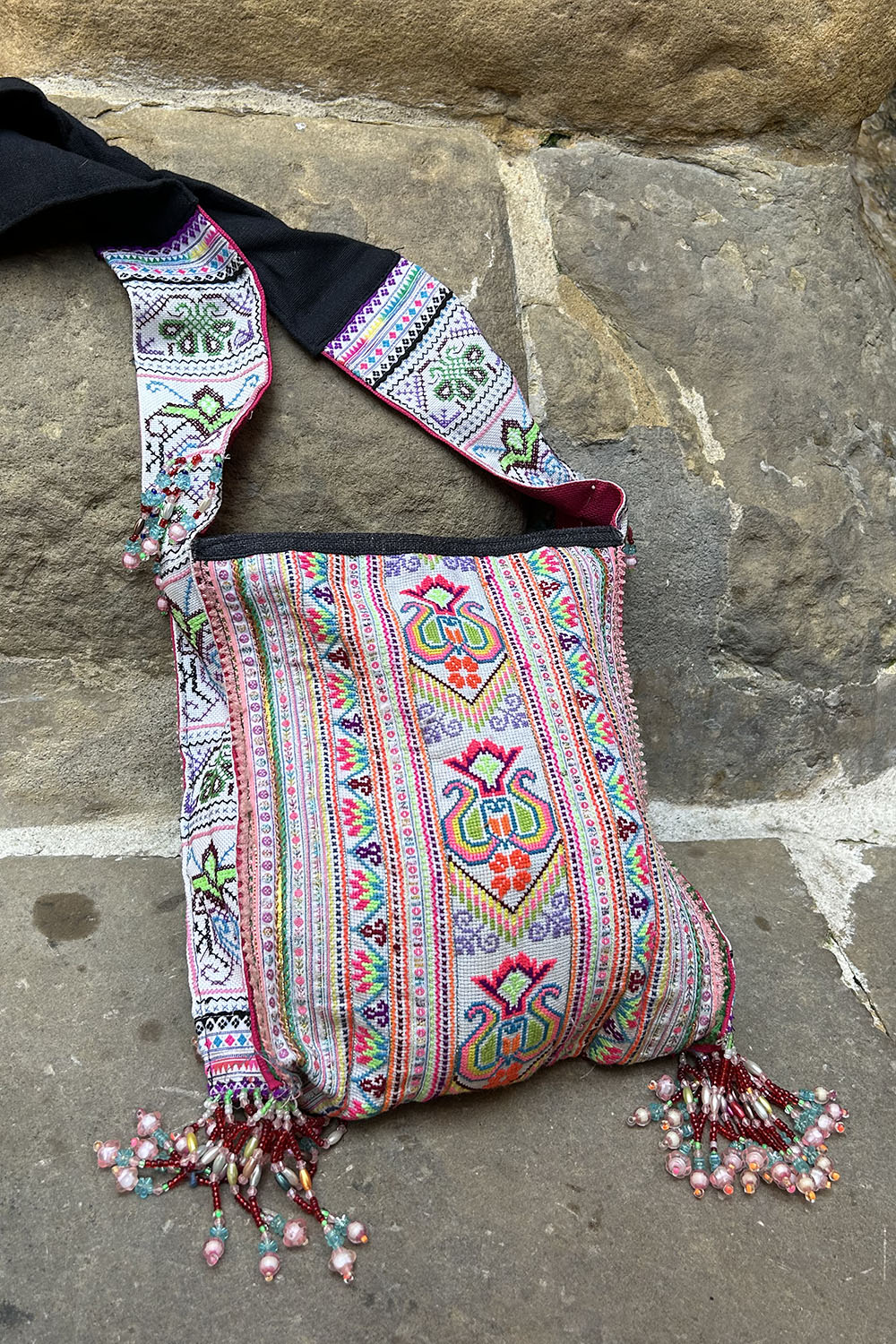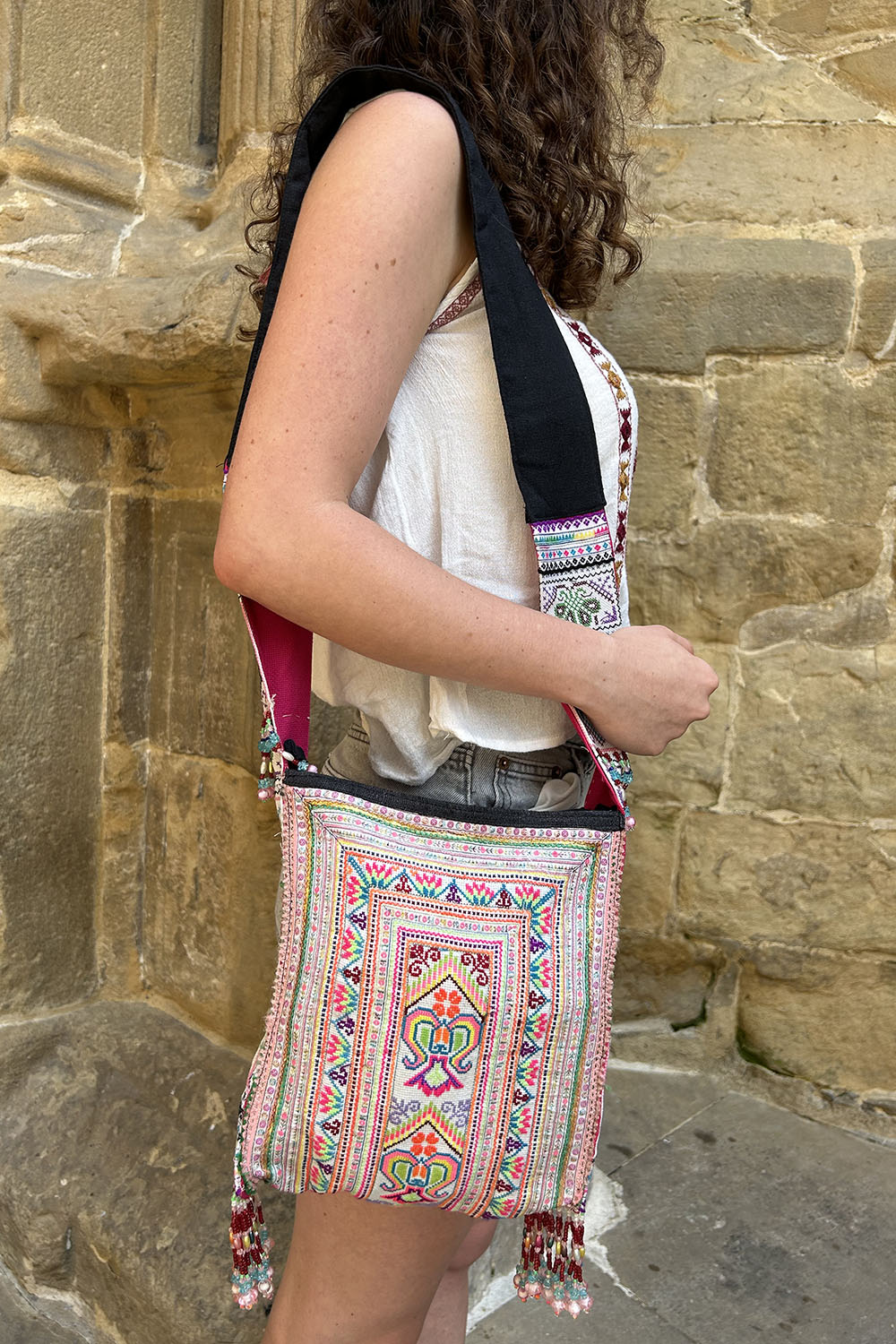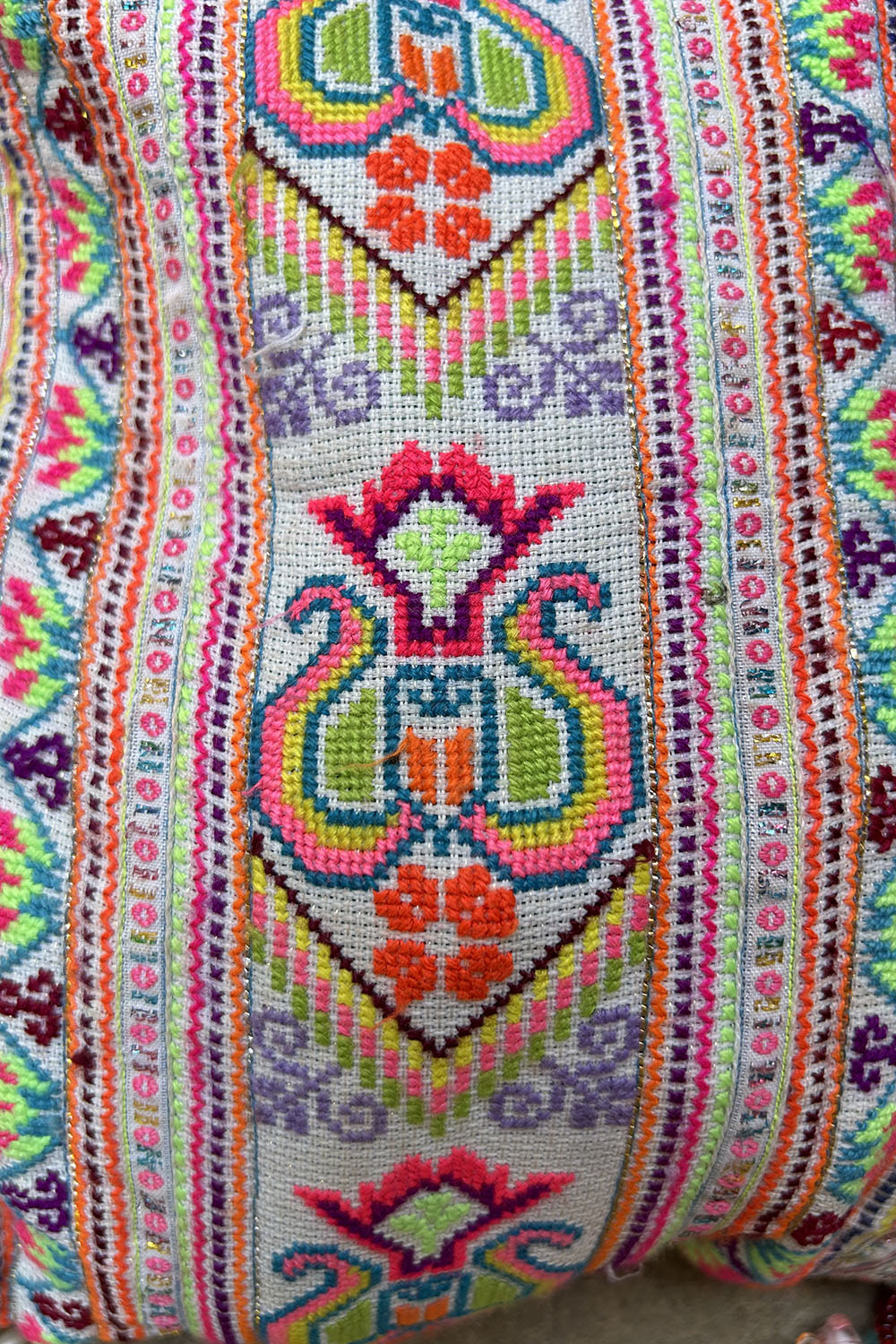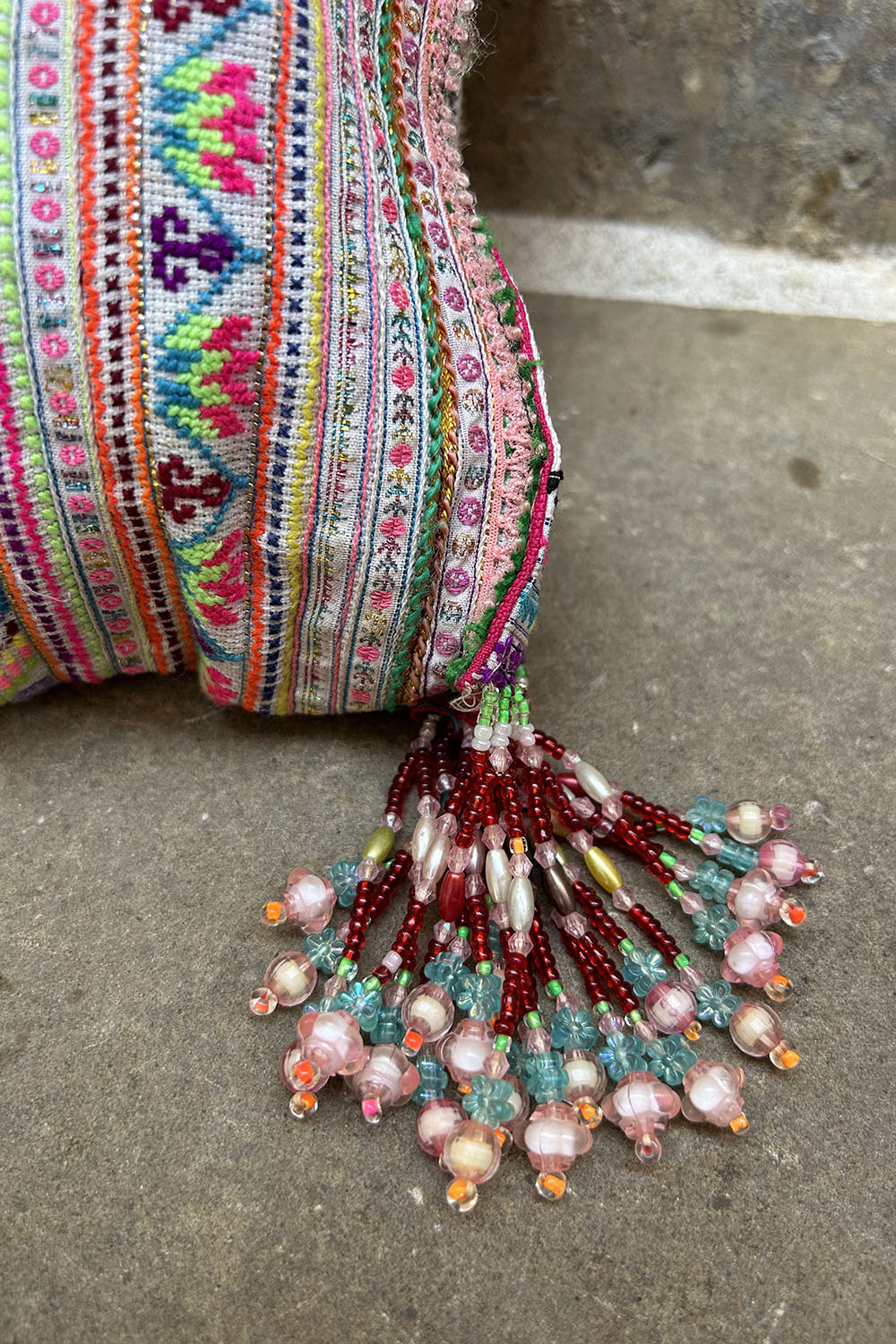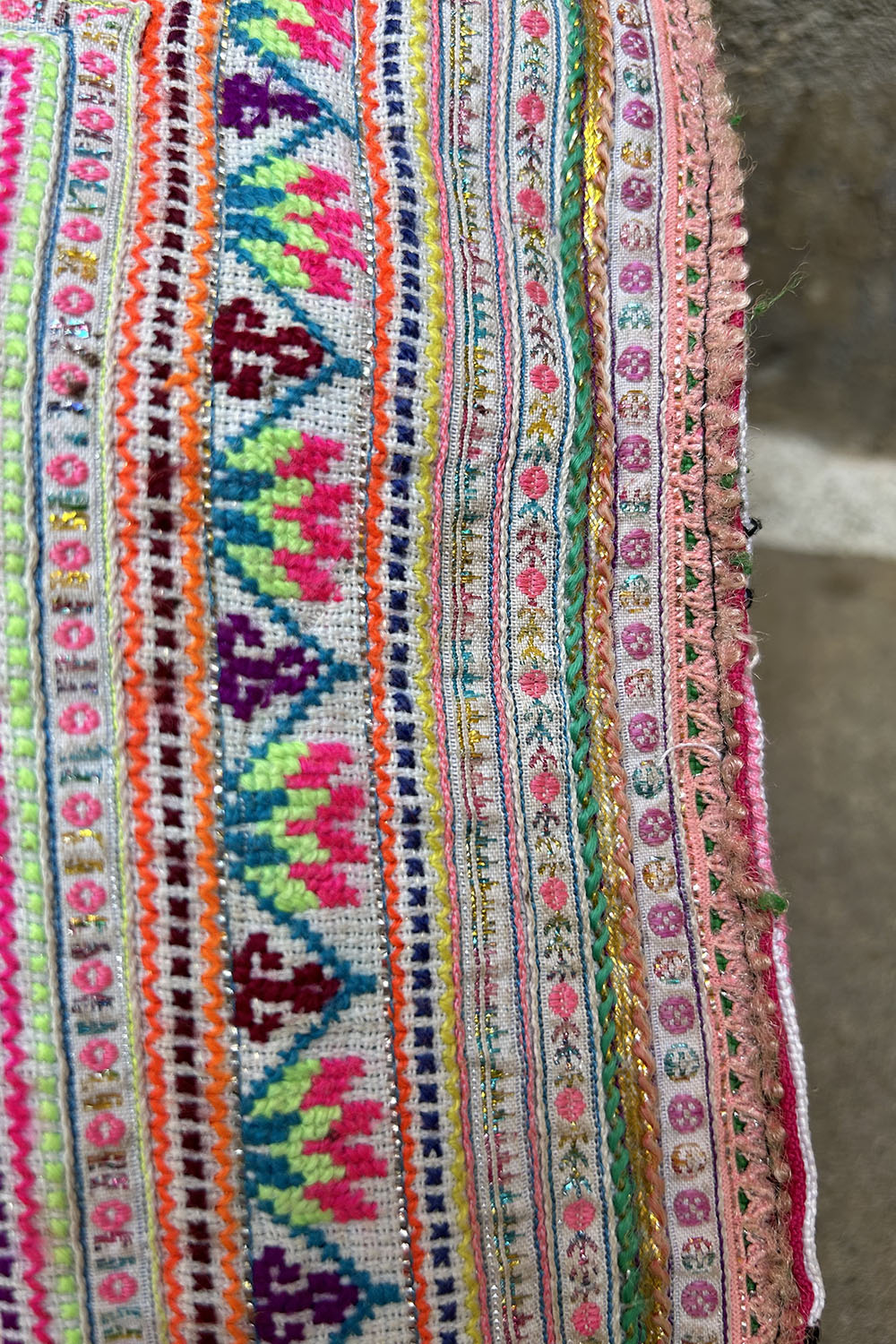Upcycled handbag made from a vintage baby carrier of the Hmong ethnic group from northern Thailand. The embroidery is extremely fine and very well designed.
Material: Cotton
Origin: Hmong tribe, Thailand
Date of weaving: 1980-2010
Baby carriers are traditionally adorned with designs and decorations by using a wide range of embroidery techniques.
The base materials can be silk, cotton, hemp or linen. In addition to embroidery, certain weaving styles and types of fabric dyeing are also used to distinguish the product. Distinctive differences in style, technique and material can be identified in specific Hmong tribes in Laos, northern Thailand and northern Vietnam.
Beginning at the age of five, young girls begin to learn sewing, and continue into their teens. At that time, they make their wedding dresses, baby carriers and baby clothes. When they reach middle age, they continue to make clothes for their offspring. Due to the elaborate design and amazing embroidery techniques, these baby carriers are an exquisite display of Hmong tribal art.
The quality of a Hmong woman’s textiles often defines her social status. The girl who can weave and embroider special patterns is considered hardworking, intelligent and will become the most sought-after bride in the community.
In some villages, a girl may therefore take her baby carrier to the market, displaying her work to potential suitors. Her handiwork is an artistic representation of her individuality and creativity.
| Weight | 0.6 kg |
|---|
